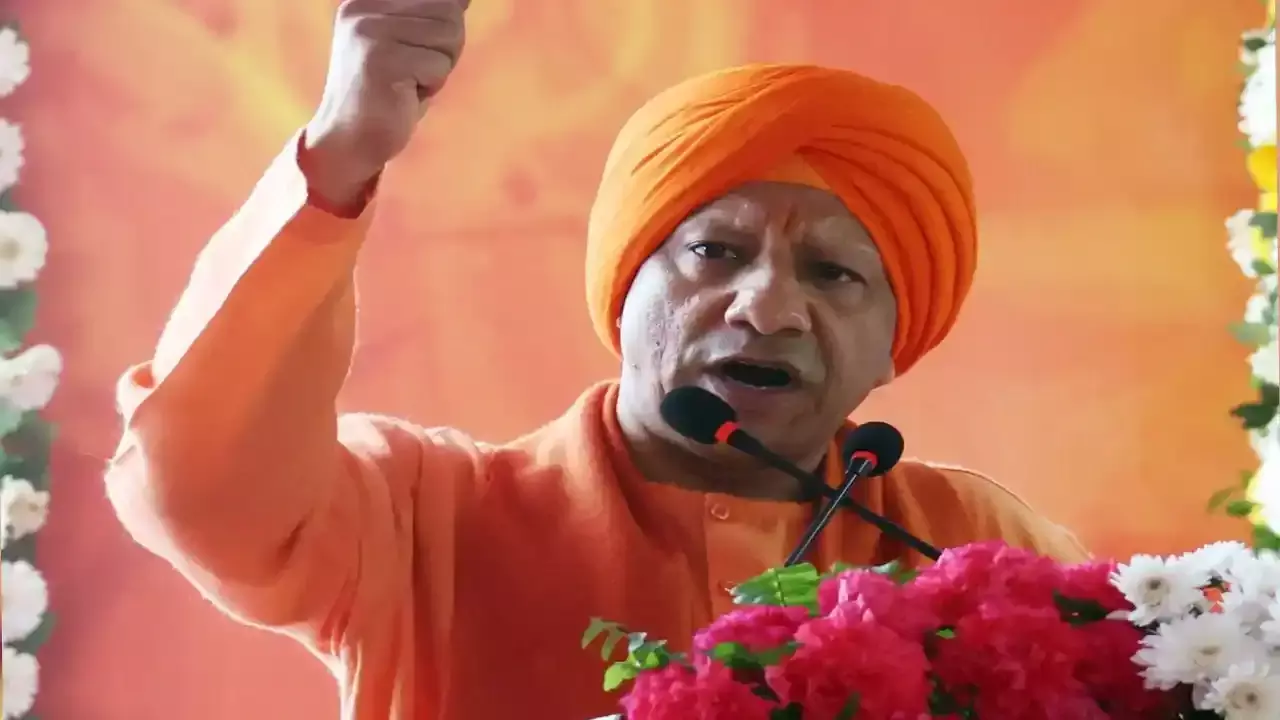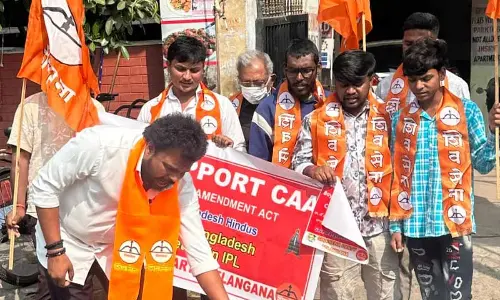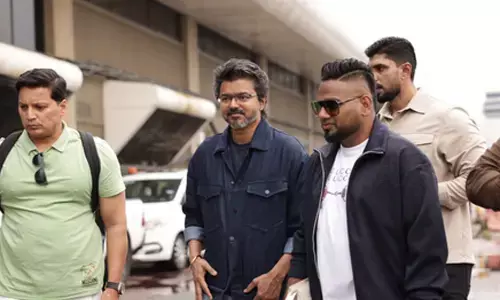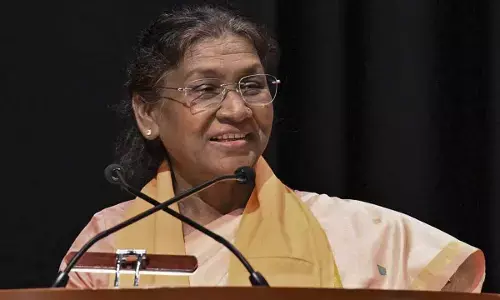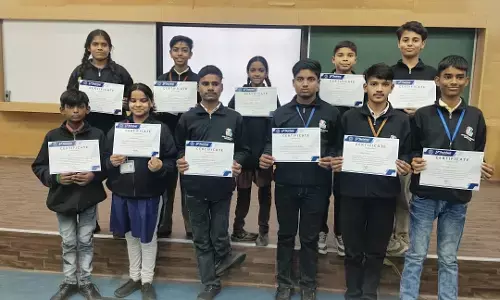Aster neuro doctors save boy with rare brain defect
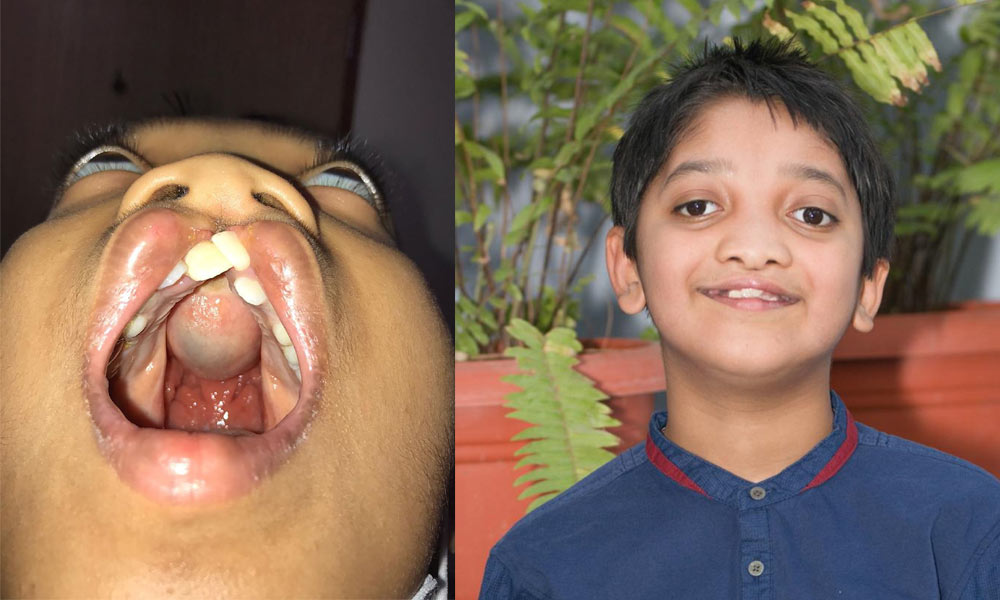
Aster neuro doctors save boy with rare brain defect
In a life altering surgery that lasted for six and a half hours, a team of doctors at Aster Neurosciences, Aster CMI Hospital, helped an eight-and-a-half-year-old Misbah Syed, son of a Bangalore-based IT professional, get rid of a rare condition called nasal encephalocele due to which his brain grew down through a crack in the skull into his nose
Bengaluru: In a life altering surgery that lasted for six and a half hours, a team of doctors at Aster Neurosciences, Aster CMI Hospital, helped an eight-and-a-half-year-old Misbah Syed, son of a Bangalore-based IT professional, get rid of a rare condition called nasal encephalocele due to which his brain grew down through a crack in the skull into his nose. The condition had impacted Misbah's life for several years. However, with the efforts undertaken by a team of multi-specialist doctors at the hospital, the child has now got a new lease of life.
An Encephalocele is a rare congenital disorder where the bones of a baby's skull do not close completely in the mother's uterus. This later creates an opening through which brain tissue and cerebro-spinal fluid protrudes out of the head in a sac-like structure and poses a huge risk of brain infections to the patients.
Every day, Misbah's parents helplessly watched their son's life unfold as an unending tragedy since a part of the brain hung from his nose like a pendulum. The condition had obstructed the child's vision and had completely deformed his nose and face. The child was also suffering from a cleft lip and additionally, a cleft palate. Even though Misbah's parents visited several hospitals across the city, the doctors who saw him could not ensure his survival because of the potential complications involved in the operative procedure.
Most encephaloceles are not life threatening and are large and significant birth defects that are diagnosed even before birth through standard investigative procedures. However, in case a child trips or knocks his nose, the risk of him contracting an infection such as meningitis is significantly increased. This can make the condition life threatening. Alternatively, it can increase the risk of patient morbidity
Explaining the procedures involved in the surgery, Dr. Ravi Gopal Varma, Lead Consultant Neurosurgeon & Chief of Neuro Sciences, Aster said, "Misbah's case was a complex one and had to be operated in two stages. The child presented to us with a cleft lip, a cleft palate, and a swelling inside the mouth. The pulsating mass in the child's mouth looked very ominous because each time his heart was beating one could see the swelling move. We then conducted a CT scan and found that the front part of his brain had settled down in his nose, which, in medical terminology, is described as a Nasal encephalocele. The child's brain had descended down as a pouch and the bone between his brain and the eye was deficient. Even though there was no impact on his brain activity and he was a very bright boy, there were chances that this encephalocele could rupture and the cerebrospinal fluid flowed out. This, in turn, could have caused an infection - a life-threatening scenario for the child."
"Therefore, before the pulsating mass could have broken open into his mouth, we consulted Misbah's parents and repaired the defect. For surgery in stage 1, we opened his skull and then retracted his brain back. We separated a lot of dead, necrotic brain from the normal brain and isolated the normal brain from the sac of non-functioning brain matter that hung from his face. We then placed an artificial bone between the two eyes and another bone on that to ensure that the brain does not fall again into the nasal cavity. In stage 2, we repaired the child's cleft lip. At present he is undergoing speech therapy. He will also undergo a surgery for repairing the cleft palate in 3 months' time. All these were huge surgical challenges which made the case a one in a million occurrence. Misbah has now recovered completely from the surgery and will be capable of resume a normal life very soon." Varma further added.
Sharing his views, Dr. Prateek P Nayak, Consultant, ENT Surgery, Aster CMI Hospital said: "We usually see such cases in the first or second year of a child's life where a small portion of the brain comes out of the brain cavity and sometimes enters the nose. However, in Misbah's case a large chunk of the brain matter had fallen into the nose. His nose too had deviated to the right and left. Furthermore, the child had cleft lip and cleft palate making the surgery very unique and challenging because, while reconstructing, we had to save a lot of blood supply to the nose. This could be possible because the surgery was conducted in two parts and we were able to save the blood supply for further reconstruction. The reconstruction of his face was done in two parts. Firstly, we cleared off the brain matter which was present in his nose; in the second session we went endoscopically to patch the opening that was present between the brain and the nose. Additionally, we ensured that his nasal blood supply and septum were maintained. The child was earlier breathing through his mouth because the swelling had prevented him from breathing properly through his nose but post-surgery his speech, swallowing, and breathing has improved."
Explaining the speech challenges which the child faced, Dr. Satish M S Vasishta, Consultant - Craniomaxillofacial Surgery, Aster CMI Hospital said: "The child was unable to talk clearly at the time he was first brought to our hospital. His speech was quite nasal and it was difficult to understand him. However, with his cleft lip being treated, his speech has gotten a little better and will improve further once we treat his cleft palate. Due to our multi-specialist team, we were able to ensure the child's survival and provide quality care to the child. With appropriate backup and skilled nursing staff, our doctors were able to diagnose this complex case successfully and give a new lease of life to the child."








